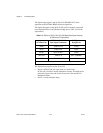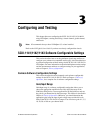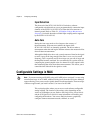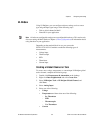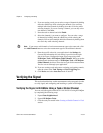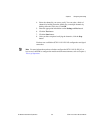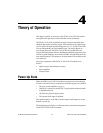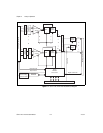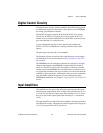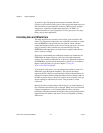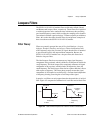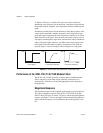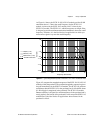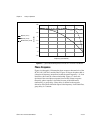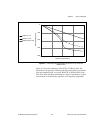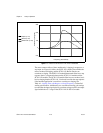
Chapter 4 Theory of Operation
© National Instruments Corporation 4-3 SCXI-1141/1142/1143 User Manual
Digital Control Circuitry
The digital control circuitry contains a Module ID (identification) register,
a configuration register for the module, a gain register, and an EEPROM
for storing gain-calibration constants.
The Module ID register contains 20 (hex) for the SCXI-1141 module,
35 (hex) for the SCXI-1142 module, and 34 (hex) for the SCXI-1143
module. You can read this module ID over the SCXIbus to determine the
type of module that is in a particular slot.
Use the configuration register to select channels and configure the
SCXI-1141/1142/1143 module for scanning, calibration, and control
options.
The gain register sets the gain of each amplifier.
The frequency dividers control the filter cutoff frequency and the output
clock frequency. For more information see the Using the External Clock
Input section.
The EEPROM stores the calibration constants for each gain for all eight
channels. Information in the EEPROM is retained when the module is
power off. The SCXI-1141/1142/1143 module has calibration constants
already stored in the EEPROM. You can modify these constants for your
set of operating conditions. One set of constants is reserved and cannot be
modified except at the factory, which ensures that you do not accidentally
erase the default calibration constants. For more information on the
EEPROM and calibration, see Chapter 5, Using the SCXI-1141/1142/1143
Module.
Input Amplifiers
The amplifiers provide gain to the differential signal between the inputs
while rejecting common-mode noise voltages. The available gains are 1, 2,
5, 10, 20, 50, and 100. The output range of the amplifiers is ±5 V. Select
the gain to prevent the output signals from reaching ±5 V, or distortion
occurs.
The input amplifiers are fully differential amplifiers with input protection
and calibration circuitry. The inputs are protected against input voltages up
to ±15 V powered off and ±30 V powered on.



